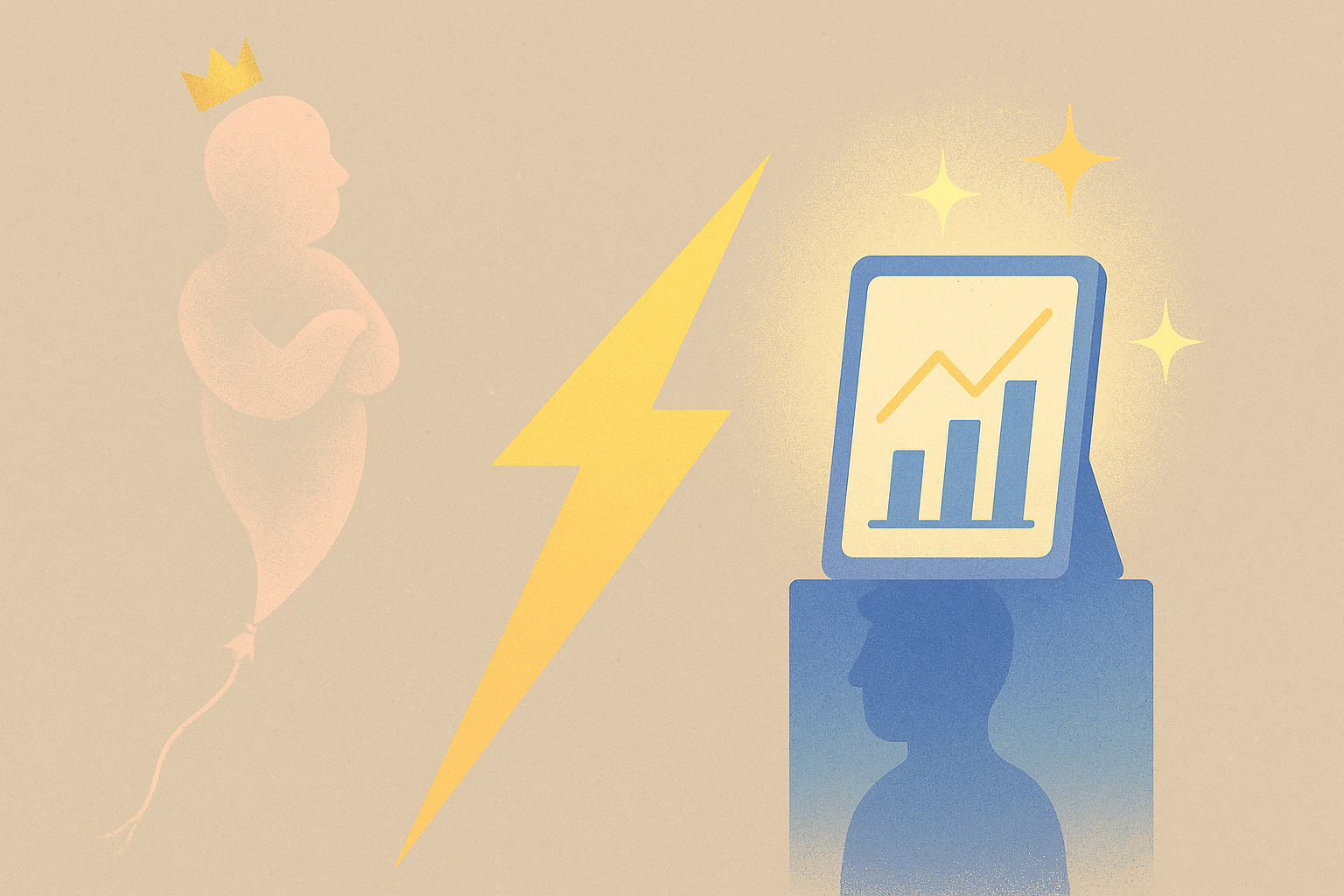
You’ve put everything into this idea. The late nights. The pitch deck you rewrote 12 times. The little dopamine hits when someone said, “That’s actually a great idea!” on a Zoom call. You skipped social events, maxed your credit card, and maybe even left a steady job because something in you believed this would work.
And now? Crickets.
Or worse vague, polite compliments with no follow-up. No signups. No engagement. Just a few people saying “Keep going!” while you’re sitting there wondering if they’re just being nice.
If you’re a first-time founder, this is emotional whiplash. You go from feeling like a future visionary to wondering if you’re just wasting your life force on a fantasy.

This is where the line between confidence and delusion starts to blur. And honestly? It’s one of the most painful, confusing moments you’ll ever hit.
You’re not just doubting the product. You start doubting yourself.
- Am I missing something obvious?
- Do I just need to work harder?
- Or am I the only one who thinks this matters?
It’s a heavy place to be because quitting can feel like giving up on yourself, your dream, and all the sacrifices you’ve made. But staying the course, blindly, can turn into self-sabotage if you’re not careful.

The Pain: When Belief Becomes a Trap
There are two brutal scenarios most first-time founders eventually face:
- Quitting too soon – You walk away just before it starts working. You were close, but you got scared or exhausted or lost belief.
- Staying too long – You keep pushing a dead idea out of pride, hope, or fear of being wrong. You dig deeper into a hole because letting go would feel like failure.
And the problem is, both feel exactly the same in the moment.
The emotional trap is that your startup starts to feel like you. You’re not just building a product, you’re building a piece of your identity.
So when the results are bad, it doesn’t just feel like the idea is failing, you feel like you’re failing.
And then come the stories.
- “Airbnb was laughed at too. No one believed in them at first.”
- “All the best ideas looked stupid until they didn’t.”
- “If I just keep going, I’ll get through this.”
And those stories might be true. But they can also be poison if they’re propping up a bad idea that’s not working and never will.
Sometimes, you’re not on the cusp of a breakthrough. Sometimes, you’re just stuck. And no amount of hustle or optimism will fix something the market doesn’t want.
But here’s the shift:
This isn’t about giving up. It’s about letting go of the version of the story that no longer serves you so you can create a better one.
The Truth: It Lives in Your Data, Not Your Ego

Here’s where the emotional clarity starts.
If you’re making decisions based only on how much you believe in the idea, you're gambling.
Belief matters. It’s what gets you started. But belief alone is not a business strategy.
It’s just fuel. You still need a working engine.
What separates confident founders from delusional ones is evidence.
- Confident founders stay curious. They ask hard questions. They seek truth, even if it hurts.
- Delusional founders look for proof they’re right and ignore everything else.
So here’s the mental shift that changes everything:
Stop asking:
“Do I believe in this idea?”
Start asking:
“Is there real, external evidence that others believe in this too?”
That means:
- Are users using the product on their own, without constant prodding?
- Are they solving this problem already, in painful or inefficient ways?
- Are they asking to pay? Or referring others? Or complaining when it’s broken?
It’s not about your opinion anymore. It’s about behavior. Behavior is truth.
Because if you’re honest with yourself, the answer is already in front of you. It’s in the usage charts. The drop-off rates. The silence after launch. Or, sometimes, in the tiny signs that people are actually craving what you’ve built.
Zoom out. Take your ego out of it. And listen to what the market is really saying.
That’s not giving up. That’s leveling up.
Case Study: Superhuman’s Pivot Before It Worked
Before Superhuman became the sleek, high-performance email client it’s now known as, founder Rahul Vohra launched it to a quiet crowd. The early user interest was... flat.
But instead of stubbornly pushing forward, he paused.
He started asking deeper questions:
Were users actually excited to use this?
Did they say they’d be upset if they had to stop?
Vohra applied a framework called the “Product-Market Fit Score.” One key question: “How would you feel if you could no longer use this product?”
The magic threshold? 40% of users need to say “Very disappointed.”
Superhuman wasn’t even close.
That could’ve been the end. But instead of quitting or blindly continuing, they got surgical. They went back, reworked the onboarding, nailed the speed, tightened the feature set and slowly, that score started climbing.
Eventually, it crossed 40%. Then it took off.
This wasn’t just resilience. It was measured persistence, grounded in signals, not ego.

Tactic 1: Ask the Hard Question
Are people already trying to solve this problem without you?
This is a huge green (or red) flag.
If people are hacking together ugly solutions, building spreadsheets, or Googling for hacks, that’s a sign there’s real pain. Pain means demand.
If no one’s looking for a fix, maybe the problem isn’t painful enough. Or real.
This single question can break your confirmation bias. It pulls you out of your echo chamber and into reality.

Tactic 2: Review the Right Signals
Don’t just ask how you feel. Look at what users are doing. The signals don’t lie:
- Usage: Are people coming back? Are they using it in ways you didn’t expect (that’s often a great sign)?
- Feedback: Are people giving specific, unprompted feedback? Do they sound like they need this?
- Retention: Are they sticking around after the first use? Or is it a one-and-done?
- Revenue: Are people paying or at least trying to? Or is this just “cool” with no commitment?
One founder said it best: “Money is the loudest form of feedback.”
This doesn’t mean you need massive numbers right away. But you do need momentum. Small signs of traction mean way more than vague encouragement.
Tactic 3: Use Time-Boxed Bets
Instead of tying your identity to an idea, run time-boxed experiments.
Say: “For the next 6 weeks, I’m going to test X. If I don’t see Y signal, I’ll revisit or pivot.”
This gives you clarity, deadlines, and emotional detachment.
It turns your startup journey into a series of bets, not a religious crusade.
It makes it easier to walk away or evolve because now it’s about data, not personal worth.
Wrap-Up: Be Brave, Not Blind
Founders love the myth of resilience. We romanticize struggle. But there’s a difference between being brave and being blind.
- Confidence listens.
- Delusion ignores.
The strongest founders are the ones who adapt, not just persist.
So if you’re in that in-between space—wondering whether to keep pushing or to walk away—know this: you're not alone. Every founder hits this wall.
The key isn’t to stop believing. It’s to believe in the right things.
Let your curiosity guide you. Let your data speak louder than your doubt. And if it’s time to pivot, do it proudly. That’s not failure, it’s wisdom in motion.



